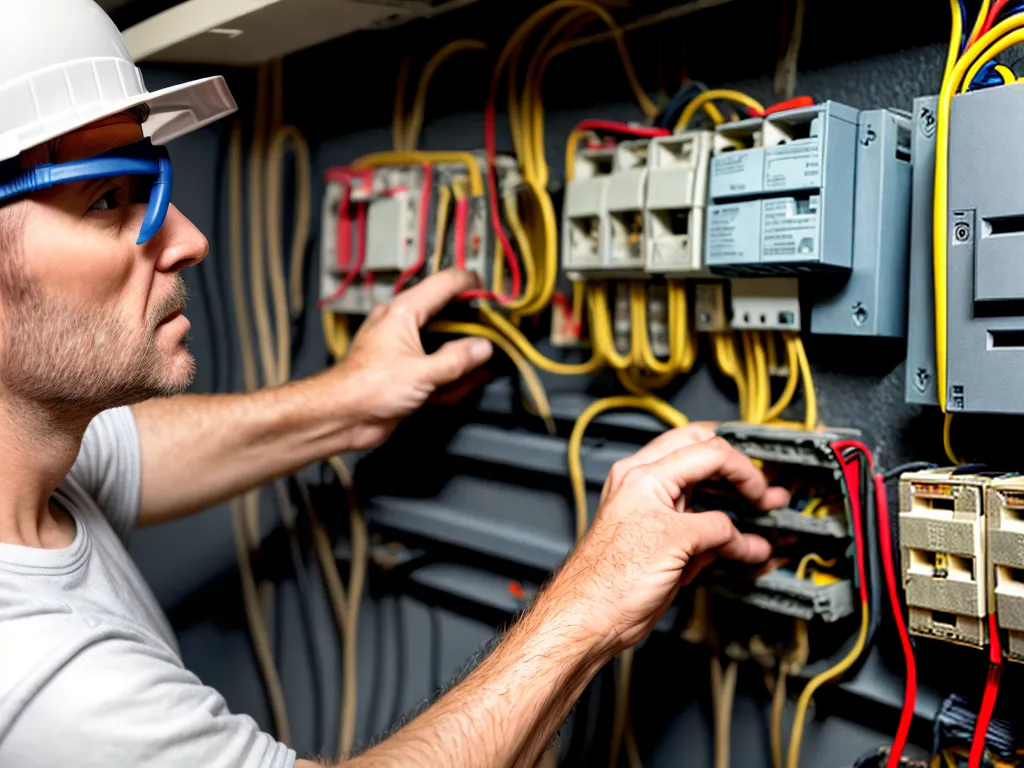
Introduction
Installing outdated electrical panels can be dangerous if not done properly. This guide will walk you through the process step-by-step to upgrade your old fuse box or panel to a more modern one.
I will cover safety precautions, required tools and materials, steps for removing the old panel, installing a new panel, connecting wires, and tips for troubleshooting issues. Proper planning and caution are essential when working with electrical components.
Safety Precautions
Working with electrical wiring can be extremely hazardous if proper precautions are not taken. Here are some key safety steps I take before starting any electrical project:
- Turn off power at the main breaker - This ensures no live power is flowing while working.
- Use personal protective equipment - Wear insulated gloves, eye protection, etc.
- Check wires with a tester - Verify power is off using a multimeter or voltage tester.
- Work with a partner - Have someone available in case of emergency.
- Call an electrician - If uncomfortable doing the work, hire a professional.
Safety should always come first when handling electrical components. Rushing or skipping precautions can risk electrocution, burns, or even fire.
Required Tools and Materials
Installing a new panel requires having the right tools and materials on hand. Here is what I gather before starting:
- New electrical panel - Make sure it's properly rated for your home's needs.
- Electrical meter - To test and verify shut off power.
- Voltage tester - Additional tool to double check for live wires.
- Wire strippers - For removing insulation on wires.
- Wire cutters - To cut and trim wires to size.
- Screwdrivers - Standard and Philips head types.
- Pliers - For bending/shaping wires.
- Electrical tape - To insulate wire connections.
- Conduit fittings - If running wiring through conduits.
- Cable staples - To attach cables to studs/joists.
- Grounding rod - Connects panel enclosure to earth ground.
Having the right tools such as cutters, testers, strippers, etc. makes the installation process much simpler and safer.
Removing the Old Panel
Once I have turned off power and have my tools ready, I'm ready to remove the outdated panel:
Disconnect All Wires
- Carefully detach all wires from breakers and bus bars.
- Group wires together by circuit using tape or cable ties.
- Label each cable grouping by circuit number if possible.
Unmount the Panel
- Remove any conduit fittings or knockouts.
- Unscrew panel from the wall and detach it completely.
- Some older panels may require prying off the wall. Work slowly and carefully.
Prepare the Area
- Remove any debris or dust from the area.
- Plan where the new panel will be positioned.
- Check if additional wiring work is needed before installing the new panel.
Taking time to properly disconnect and remove the old unit makes installing the new one much simpler.
Installing the New Panel
With the old electrical panel fully removed, I can now install the upgraded replacement:
Mount New Panel
- Position the panel over the existing wiring holes.
- Drill or cut additional openings if needed.
- Secure the panel enclosure firmly to wall studs.
Re-Install Grounding
- Attach a ground wire from panel to grounding rod outside.
- Ensure ground provides a safe path for faults/surges.
Connect Wires
- Match and connect labeled wire groupings to new breakers.
- Follow diagram inside panel door for proper layout.
- Securely fasten all wires to prevent detachment.
Double Check Connections
- Tug on wires to verify tightness.
- Use a voltmeter to test for faults.
- Ensure insulation covers all terminals.
Taking it slow and methodically verifying each connection is vital for safety.
Powering Up and Testing
Once fully installed, I'm ready to send power and test operation:
- Notify others in the home power is being turned on.
- Flip the main breaker switch to the "on" position.
- Walk through home flipping each circuit on to check for issues.
- Plug in devices and turn on lights to verify proper operation.
- Use a voltmeter to measure voltage - should match panel rating.
- Listen and smell for signs of buzzing, burning. or smoke.
- If any issues, turn power off and re-check wiring connections.
I keep monitoring the new panel for the first few days for any signs of abnormal operation. I also log the number of circuits and their amperages for future reference.
Troubleshooting Problems
Despite best efforts, sometimes issues can arise after installing a new electrical panel. Here are some common problems and solutions:
No Power Anywhere
- Check if main breaker is switched on.
- Verify power company has not shut off service.
- Test main lugs for voltage - if none, problem is outside.
Random Circuit Not Working
- Check if breaker is flipped off and not engaging when switched. May need replacement.
- Inspect wires for damage, loose connections, or shorts.
Lights Flickering/Dimming
- Usually indicates a loose wire connection. Tighten all terminals.
- If persists, wire may be undersized. May need to run new wire.
Buzzing/Humming from Panel
- Check for loose breaker or wire connection.
- Contact an electrician if buzzing continues. Could indicate arcing.
Being methodical in diagnosing and addressing issues can help identify and fix problems. Calling an electrician is recommended for any complex electrical repairs.
Conclusion
Upgrading outdated fuse boxes and panels is extremely worthwhile to prevent fires or electrocution hazards. Taking proper safety steps, using the right tools, and methodically installing the new panel can make the process manageable as a DIY project. Always exercise caution when working with electrical components and call in an electrician for assistance if needed. With some diligence and testing, you can upgrade your old electrical panel and enjoy safer, more modern power in your home.